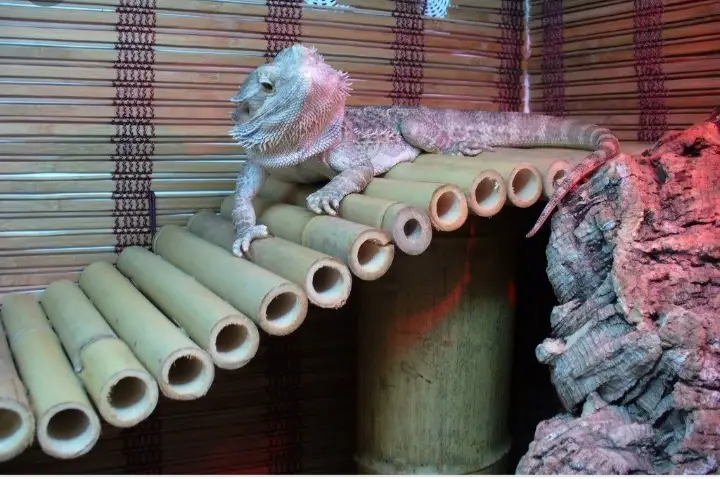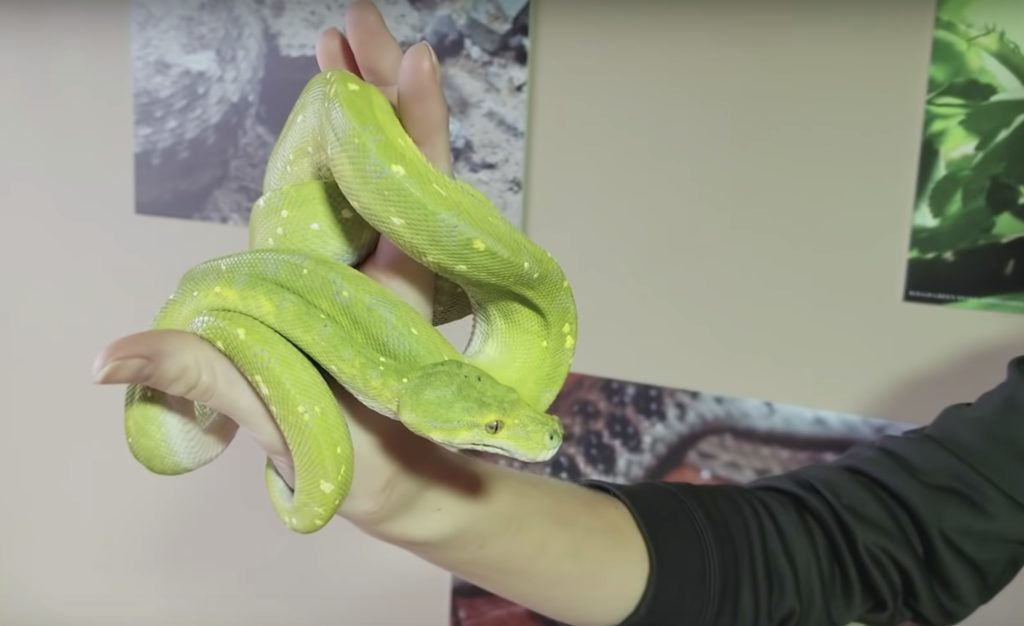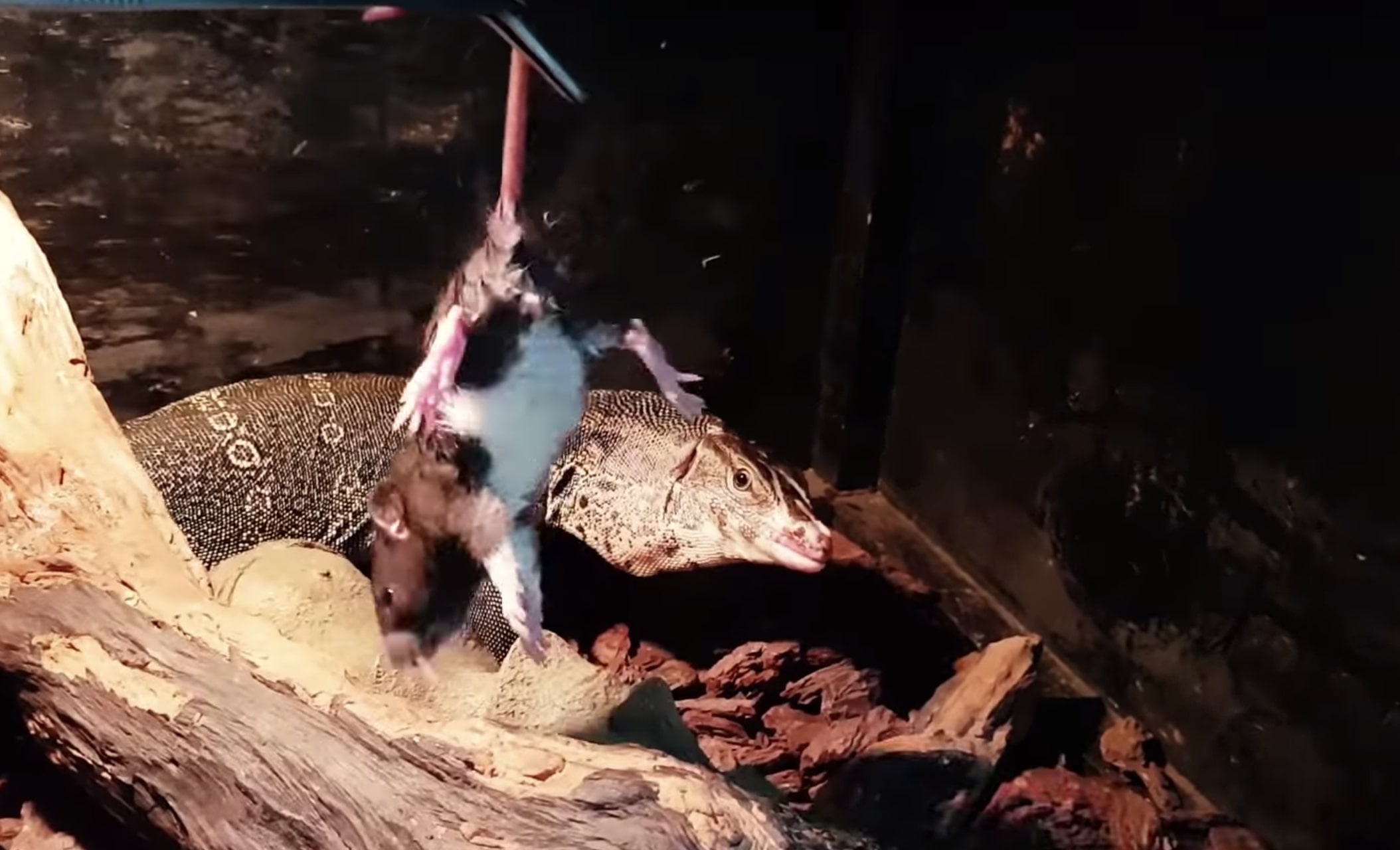The mention of reptiles can have a variety of images for you as a reader. In most cases, what you imagine is your favorite snake, lizard or turtle among others. One thing is for sure, when you take your reptile from the point of purchase to your house there is a need to take time acclimatizing to the pet.
As you would want to interact and bond with your pet reptile as soon as possible, it might not be possible immediately. It takes time for the pet to get used to you and trust you for petting or handling. Reptiles show emotions, but it is not as escalated as dogs do. Nonetheless, there is a way that you need to approach them before handling them.
Most reptiles will only take one meal at a time, and this happens once every week or so. Therefore, it is important for you as the owner to make arrangements on how the feeding will take place. In addition, how the pet is to be held during the process should also be put into consideration.
Contents
How to Get Your Pet Familiar with You
Pet reptiles are mostly similar in how they relate and interact with people. There are a few specific differences among them based on their species, but the general rules of interactions are similar. For instance, when you get a pet snake, it could be the best low maintenance pet. You need to consider the fact that interacting with the snake differs significantly from how you do so with a dog.
Getting your pet snake or lizard comfortable with you requires your presence and frequent handling. The more it sees or feels your presence, the quicker it will get familiar with you. You will enjoy the relationship in the long run. Nonetheless, you need to take time and not just jump into the relationship.
Let the Reptile Get Used to You
During the first week that you get your pet, whether an adult or a juvenile, you need to leave it alone. When introduced into a new environment, a reptile takes time to get used and acclimate to its new environment. Once a week is over, you can comfortably begin your interactions with the pet.
Whereas the pet may have rested and acclimated to its new home, note that it could still be aggressive. In case you try handing it and it shows signs of aggressiveness, such as hissing and striking, leave it for another three to four extra days. Try handling the reptile again after this period.

Make Occasional Rearrangements in the Pet’s Cage
You need to ensure that your pet gets used to your presence. One way to ensure that this happens, you should keep making changes in its cage even without handling it. Such is expected to make the pet get used to your presence. Furthermore, the pet will cease relating you with danger and see you as harmless.
Move its branches, home, water dish, and other accessories that your pet uses around the cage. It will increase the pet’s comfort with your presence in its home. While doing this, make sure not to touch the pet. Additionally, conduct your activities in slow and deliberate movements that will not scare the pet reptile. It will further enable the reptile pet to relate with you as a harmless individual in its environment.
In case the pet is a snake, and while you are rearranging its cage it makes an S-Shape using its neck and faces you, please remove your hand out of the cage slowly. That movement of a snake is a sign that it is preparing to strike. If it succeeds and your hand is in the cage, you might get bitten.
Hand Holding in Front of the Pet’s Head
Most reptiles, especially snakes recognize things through smell. Getting comfortable with you entails ensuring that your snake knows your scent. You need to start by trying to hold your hand a few inches away from the snake’s head. This can be three to four inches. The snake will smell your scent.
As previously mentioned, if the snake gets into a striking position, you need to get your hand out slowly out of the snake cage. In case the snake makes no reaction, attempt moving closer towards it. You can exercise caution by wearing gloves if you sense your snake might be aggressive.
You might need a large snake cage because for better moverment

Touch the Pet Reptile while in the Cage
Once you get the pet acclimated into its new home, say after a week or so, you can begin touching it lightly on its back. Focus more on the end section of its back. The hand movement should focus more on the sides as opposed to covering it by putting the handover. With this as a start, work towards the front of the snake behind its head over time.
While making these touches, you should try as much as possible not to touch the snake’s head at the start. Such touches could scare the pet and its reaction could be an attack on whatever it touching it. In case you have a snake as your pet, never grab its tail. Such a movement will result in its spinning and striking you.

A health and sanitary concern you must take care of is washing your hands after handling the pet. Most of these pets may carry bacteria and parasites on their bodies. It will ensure that you do not contract any ailments after a nice session of bonding with the pet.
Continue with familiarization
A week after the pet has settled down; ensure that you continue with the familiarization endeavor. Rearrange the cage daily, and hold your hand in front of the pet a few times a day. This will increase the snake’s knowledge of you. Do not attempt to handle the pet if it is still acting aggressively. Wait until it is calm for you to handle it.
Settling in for the New Reptile
Once the setup is ready for your reptile to arrive, you go ahead and take it from a store into its new home. Consideration needs to be in place regarding the amount of care your pet receives for the few weeks that follow. Most new owners fail to realize that their pet’s first few weeks at the new home are critical to their overall comfort.
It is a stressful period for an animal as it gets used to the new environment. Unfortunately, the stress signals are not evidently noticeable for humans, especially if you are a new reptile keeper. In case they are under some form of stress, we do not realize it until it has reached a critical stage.

Most of these problems related to new reptiles are related to stress and can be prevented. You need to focus on how to prevent them. This has to do with the entire process of bringing them home from the breeder or store, to feeding and how you interact with them.
Bringing a New Reptile Home
Prior to getting the pet home, you must ensure that its new home is ready. Check the vivarium and ensure that all the requirements, such as humidity and temperature are appropriate for the pet. In case the pet came home before its new home is ready, leave it in its box provided it is not dark and cover it over. Place it in a quiet place until the cage is all set up and ready.
It is always better to leave the pet in the box and let it rest quietly than having it in the cage that you are still fiddling with as you conduct final touches on furnishings and temperature. Once it is ready, place the pet in the cage and leave it exploring for the rest of the day. You can even cover the cage’s glass opening if it has one.
In autumn, you might need to heat the cage or tank to get the temperature suit with the reptile.
Avoid peeking on it the rest of the day
Covering will enable the pet to take in what is its new home environment without any external distractions. You should also avoid peeking on it for the rest of the day because it will distract the pet. Any form of disturbances or distractions on the first few days can be extremely stressful for the reptile. It most definitely makes it hard for them to settle into their new home.
For the initial week or for some pets that are highly prone to stress, such as, chameleons, there should be no actual physical touching while you are around the cage or reptile. You need to change the water daily and clean any droppings, and also feed if it is required. While the pet is settling in, there is no need to intrude into the cage more than necessary.
When the pet is well settled, it will be easy to handle, and its health will be good overall. Therefore, as a new reptile pet keeper, you need to remain patient with physical contact. It will pay off with a great future relationship with your pet.
Feeding a New Reptile Pet
On the first day of your pet’s arrival, you should not feed it. A new reptile pet will rarely feed when stressed, and a change of environment is a major stressor. Additionally, when your pet starts eating, it is an indicator that they have become accustomed to the new environment.

Regardless of the reptile species, you need to keep this routine in practice. When you are comfortable to start feeding the pet depending on their feeding needs, select a specific time of the day to do the feeding. You need to stick to this routine, and it prepares your pet on when to expect disturbance. The pet also becomes assured of no disturbance outside of this time.
The needs of reptiles change from one species to another. Below are some common rules of feeding for specific species of reptiles. Understanding the specific needs for your pet in relation to feeding after it arrives to allow you and the pet to get used to one another. It also improves the pet’s quality of life.
You will need a small food clamp to avoid biting from the reptile.
Snakes
If your new pet is a snake, you need to change the water every day. Try your best to ensure that this routine occurs at the same time daily. You should offer the snake its food once a week. Put into consideration the advice you received when the pet was purchased.
Each of the species and individual snake differs from others and you need to understand how they have been feeding in the past. Sticking to their feeding routine will make them comfortable. If the feeding has to be done in the cage, leave the food overnight, and if the snake has not eaten it by morning remove it.
A stressed snake has a higher likelihood to eat in the dark when it is quiet than when there are light and noise. However, if your snake fails to eat within the first three weeks since bringing it home, you need to consult the shop where you bought it. Notably, a snake may not eat the first two offers of food and in case this happens, do not offer more food until the following week.
Tortoise
A tortoise needs to eat daily in the morning. You should feed your tortoise some green leaves. Additionally, leave the snake until the following day with no additional feeding during the rest of the day. When feeding, you need to take the opportunity to change the drinking water as well.
It should not come as a surprise if in the first few days the tortoise fails to eat. These animals settle in slowly, and it is important that you stick to a routine. While the green leaves may dry in the course of the day, there is no need to worry since dry leaves cannot harm the animal should it consume them later. Focus on leaving the tortoise for most of the day than disturbing it often by replacing the dried food.
Lizards
Upon getting your new lizard home, do not feed it for the first 24 hours. Similar to snakes, there is a reduced likelihood for them to eat due to their new environment. Furthermore, lizards eat insects and like them alive. Therefore, having such insects crawling and jumping around the cage will only act as an additional stressor to the animal.
Once they have settled down and 24 hours are over, start feeding them. Start with a small amount and increase the amount over a couple of days or weeks. If the lizard is usually active in the evening, there is a need to ensure a routine is followed. Maintenance and change of the freshwater and food can be done either in the evening or morning.
If your pet lizard is active during the day
Feeding and water replacement should be done in the morning. Some lizards that are active during the day include bearded dragons and chameleons. Apart from regular maintenance of the cage no other interference with the lizard should happen. However, you can spray your lizard with water in the afternoon if it needs it.During the first time that feeding occurs, only add a few insects into their eating bowl or place. Do not watch them, but rather leave them to eat alone. There is a higher likelihood for the snake to eat if it is left alone. If it eats all of them, as you do your daily chores the following day add a few more insects. However, if not eaten, do not add more.
Once the lizard gets accustomed to peace and little disturbance, it should be able to eat well. If they start eating well, you can make sure the portion of feed is ample for their age. During this early stage, do not feed the lizard from your hand. For them to feed directly from your hand, it will take time and trust.
The same applies for them to eat while being watched. If they are yet to settle in properly, there is a high tendency that the direct feeding or being watched will only push them towards not eating. Ensure that you have a proper understanding of the frequency of feeding, and the number of insects that the specific species needs.
As with other species, do not worry about the food not being eaten properly for a few days or weeks. In addition, if you do not get the chance to see the lizard eat, don’t worry. The appearance of droppings shows that the lizard ate and is getting comfortable.
Privacy
Reptiles differ in terms of their personalities and privacy requirements. Some tend to enjoy privacy more, which means less time handling them, and more hiding points in their cage. At the same time, there are those that enjoy handling, and this is fine for you to do. However, you need to understand the snake’s needs before designing its home.
In relation to privacy for some shy reptiles, such as water dragons, you may have to cover parts of the cage with a towel or an opaque sheet. It aids with the development of a sense of security for the reptile. When the reptile is new at home, you may need to place in a section of the home where there is less traffic.
Conclusion
There are several rules on how long to leave a new reptile alone. A new reptile requires ample time to settle into its new environment. Do not offer any food within the first 24 hours. When you start feeding, it needs to be done at specific times during the day and a routine is developed.
The first week should involve little disturbance, and trust should be developed over time. Patience is a virtue that needs to be applied in this case. Do not watch the reptile while it eats. Focus on ensuring that it gets used to eating in its new environment and start engagements slowly.
